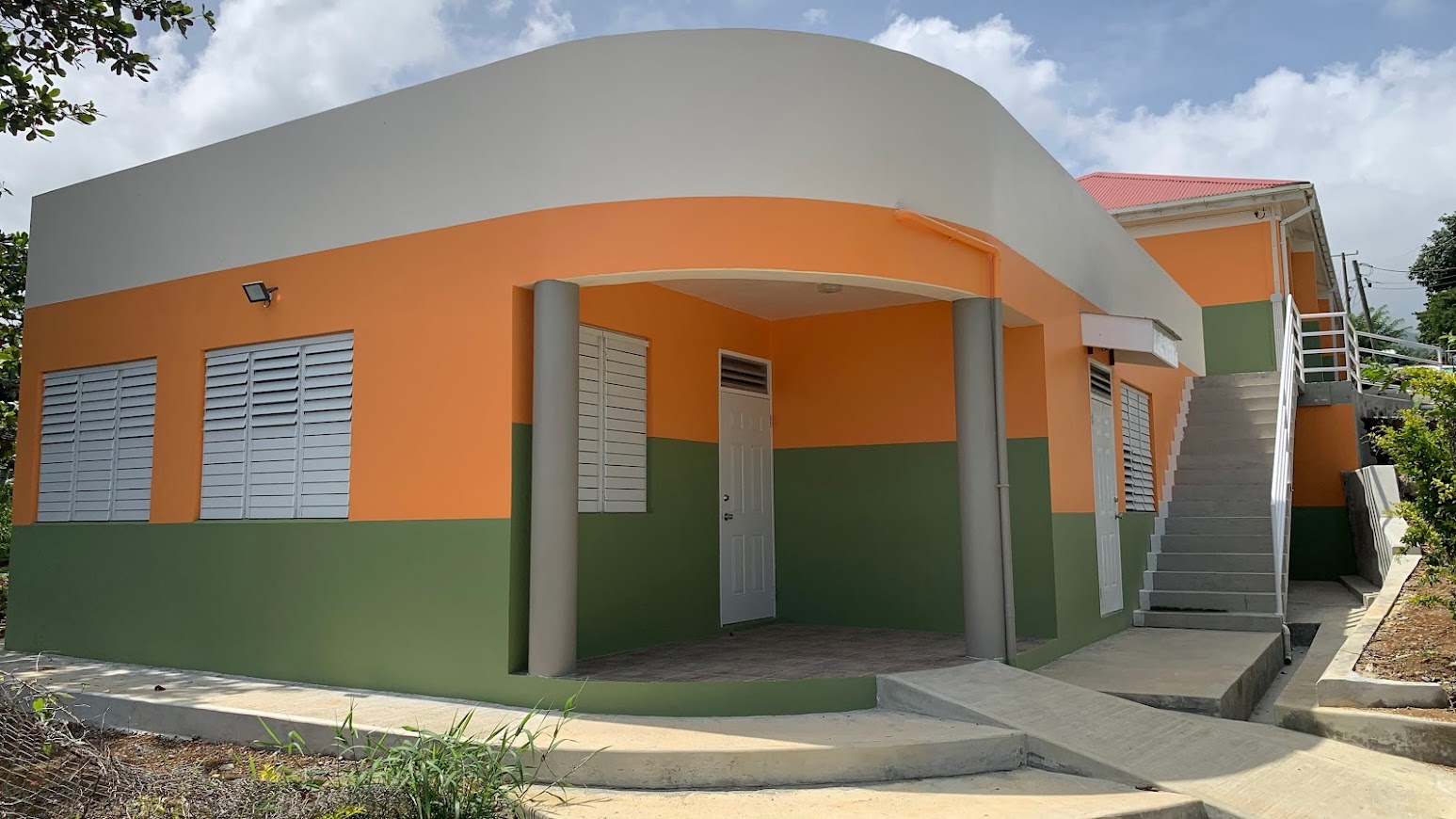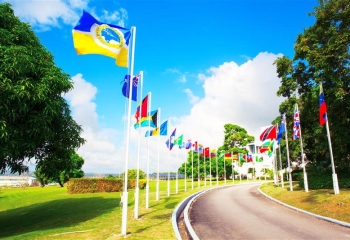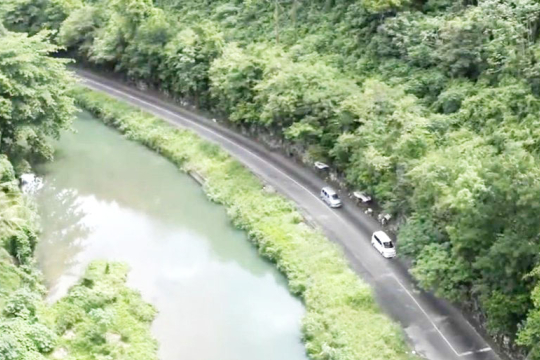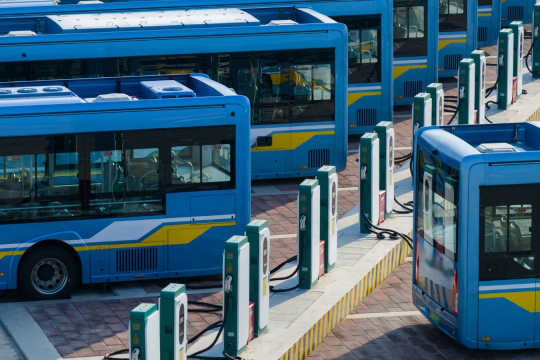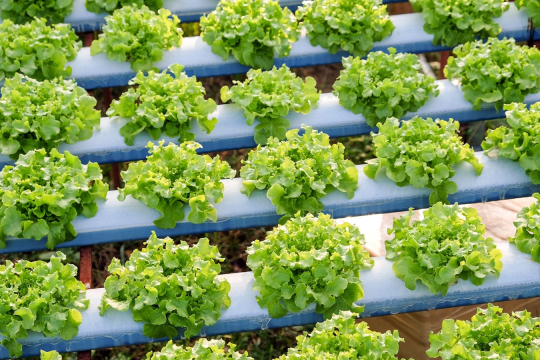Situated in the hazard-prone Atlantic Basin, the Caribbean is among the most vulnerable regions on the planet in the face of climate threats. Due to its location, geomorphology and socio-economic characteristics, the Caribbean is highly exposed to numerous climate-related hazards such as: hurricanes; tropical storms; storm surges; sea-level rise; flooding; increasing temperatures; and drought. Caribbean countries are already encountering difficulties adapting to:
-
the increasing intensity of extreme weather events;
-
declining freshwater availability, including reduced useable rainfall during the wet season (which would normally sustain countries during the dry season); and
-
rising sea levels (and associated increases in coastal erosion, flooding, and saltwater intrusion of freshwater aquifers).
Climate change projections suggest an intensification of these risks over the coming decades. This is negatively affecting (and will continue to affect) agricultural production and food security, the integrity of water systems, the tourism sector and physical infrastructure (e.g. buildings, transport networks) throughout the Caribbean. The negative impacts on economic activity and incomes, (un)employment, public sector budgets and private balance sheets are all significant and will likely continue to mount over time.
The Caribbean Development Bank is committed to boosting access to adequate climate finance under affordable terms and conditions for its Borrowing Member Countries (BMCs) and lobbying for increased funding and other support for adaptation, loss, damage and recovery for BMCs affected by climate change.
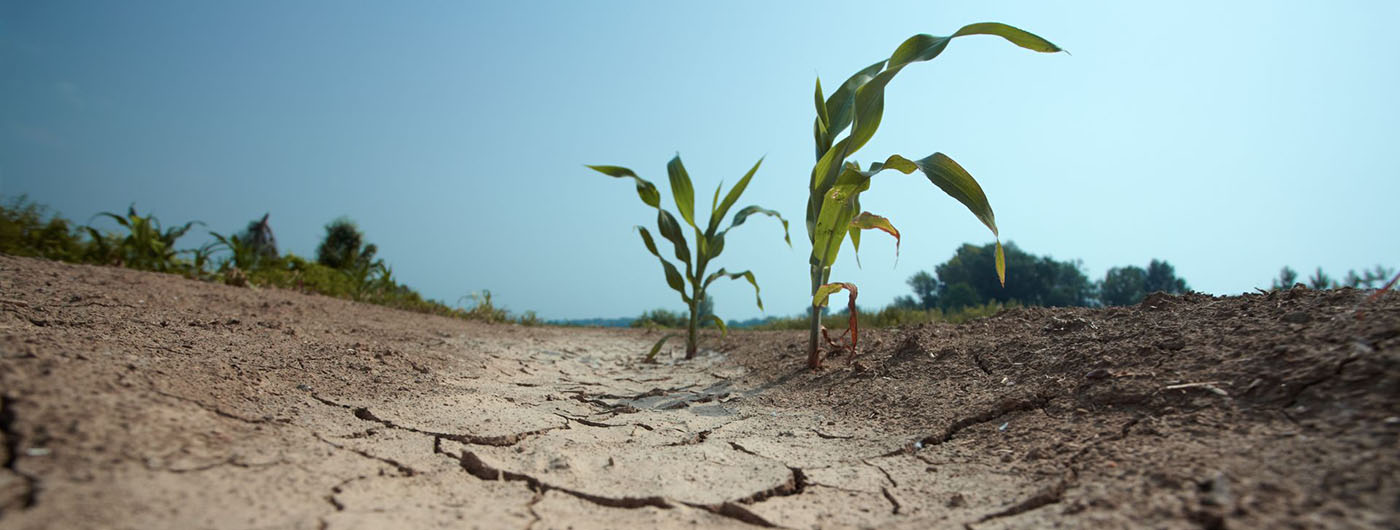
The Caribbean Development Bank (CDB) facilitates the economic and social progress of its Borrowing Member Countries (BMCs) and champions the Region’s climate resilience efforts. The CDB Strategic Plan Update 2022-2024 underscores a holistic approach to resilience, encompassing social, environmental, economic, financial, and institutional aspects. Within the pillar of environmental resilience, the Bank plays a pivotal role in:
-
Ensuring access to reliable climate data and information
-
Integrating climate risk assessment into planning and decision-making processes, and
-
Forging robust partnerships to harness expertise and mobilise affordable and reliable climate finance for BMCs.
Operationalising Climate Considerations
CDB has adopted a risk-layered approach to support its BMCs to enhance resilience of the most vulnerable groups, and infrastructure in key climate-sensitive sectors such as agriculture, water, road transportation, energy, and tourism. This approach entails inter alia developing strategic partnerships with national, regional and global institutions to harness expertise and mobilise adequate concessional finance, facilitating the integration of Disaster Risk Management (DRM) and Climate Change Adaption (CCA) into development planning and decision-making, and aligning the Bank’s lending and operations with the climate change priorities of the BMCs and the goals of the Paris Agreement.
All CDB-financed investment projects are systematically screened for climate risks, and climate risk and vulnerability assessments are undertaken as required. CDB then works with BMCs to integrate relevant measures into investment projects to help mainstream climate resilience into the Region’s infrastructure investments. CDB country engagement strategies similarly integrate climate resilience considerations.
Increasing Climate Finance
Overall, CDB is making a concerted effort to scale up flows of climate finance to support much-needed investments in the Caribbean. Between 2017 and 2023, we invested around USD 347.4 million in climate projects. Over the last 7 years we have allocated 16% of our development financing to climate action and have intensified our lobbying for more concessional climate finance from global funds.
CDB also works with international partners to harness expertise and mobilise concessional climate finance to scale up investment in climate change adaptation and mitigation. CDB manages the Caribbean Action for Resilience Enhancement (CARE) Programme financed by the European Union (EU). CARE is a five-year Programme that will provide EUR14 million in grant financing to support initiatives to reduce the impacts of climate change and disasters in BMCs. CARE is focused on improving governance of disaster risk management and climate change adaptation as well as strengthening evidence-based and gender-sensitive decision-making.
CDB is also working with BMCs to develop an ambitious pipeline of programmes and projects for co-financing from the Green Climate Fund (GCF), which will be catalytic in scaling up investment in climate action in the Caribbean. CDB has mobilised Project Preparation Facility (PPF) grants to support the development of large-scale capital projects that will: (i) increase access to concessional credit for local small businesses, with a focus on greening the tourism sector; (ii) enhance the resilience of water supply and water infrastructure; (iii) ramp up investment in distributed energy resources such as rooftop solar photovoltaic and battery energy storage systems to enhance energy sector resilience and reduce greenhouse gas emissions; and (iv) mobilise public and private sector investment to support the regional transition toward a climate-smart blue economy. CDB also recently secured GCF Board approval to upgrade its accreditation to enable the Bank to manage individual GCF-financed programmes/projects that are up to USD 250 million in size. This will enable the Bank to develop and deliver a more ambitious pipeline of programmes/projects in partnership with the GCF over the coming years.
Furthermore, CDB is supporting implementation of the Building Resilience and Adaptation to Climate Change and Climate Vulnerability in the Agriculture Sector in Saint Lucia project. The intervention is financed through a USD 9.9 million grant from the Adaptation Fund and will contribute to increasing resilience in four agriculture regions in Saint Lucia through improved water security, farm productivity and livelihoods.
CDB has also been implementing the African Caribbean Pacific-European Union-CDB Natural Disaster Risk Management in CARIFORUM Countries Programme. This initiative has delivered significant benefits for the Region, including:
-
support to the Caribbean Disaster Emergency Management Agency (CDEMA) to develop Model Guidelines for National Shutdown Procedures for Hydrometeorological Events to help countries improve their emergency response protocols and procedures;
-
the development of a multi-criteria bushfire index to provide accurate bushfire warning to at-risk communities in Jamaica; and
-
a climate and geophysical hazard risk profile for the power sector and associated designs to build resilience in the Saint Vincent and the Grenadines national electricity network including hydropower generation.
-
Support to the Caribbean Tourism Organization to prepare and publish the Caribbean Sustainable Tourism Policy and Development Framework.
-
Design of 3 online courses and publication of a suite of tools to help assess and design effective gender-sensitive climate resilience actions for the water and road transport sectors in the Caribbean.
-
Upgrade of early warning systems in the Region.
-
Support to capacity development through training of nearly 2000 people and sensitization over 1.5 million on DRM and CCA
As a result of these and other efforts, CDB’s lending and operations have been found (via an independent assessment) to be consistent with the goals of the Paris Agreement. The Bank is also working to further strengthen its Paris Alignment, and reports to member countries on the progress achieved in this respect.
In addition to continuing the above-described work, CDB is also laying the groundwork to scale up its climate-related support, including by pursuing new and innovative approaches that can help address key bottlenecks that are otherwise inhibiting investment.
-
CDB is in the process of establishing a new Climate Change Project Preparation Fund (CC PPF). Limited access to project preparation resources is one of the key barriers inhibiting climate finance flows to the Caribbean. Building on the experiences of other Multilateral Development Banks, CDB plans to launch and operationalise the CC PPF in early 2025, and will use it to support BMCs to identify and prepare high-quality climate action projects.
-
CDB recently secured approval of a sizeable new regional sustainable energy initiative financed by the Government of Canada, called Supporting Resilient Green Energy (SuRGE) in the Caribbean. Through this new programme, CDB will help finance much-needed sustainable energy projects in the BMCs while simultaneously supporting policy development, capacity strengthening and other technical assistance activities that will help BMCs transition toward more sustainable, resilient and inclusive energy sector development pathways.
Capacity Building
CDB remains at the forefront of proactive engagement with key stakeholders, advocating for increased climate action across national, regional, and international levels. By directing its efforts toward initiatives that cultivate awareness and education, the bank has effectively engaged both the public and decision-makers in understanding climate risks. Central to its approach is the unwavering commitment to utilizing, endorsing, and advancing the use of scientific data. This approach not only underscores the bank's commitment to evidence-based planning but also underscores its support for the creation of tools and knowledge products that bolster the region's resilience.
In collaboration with the Climate Studies Group Mona of the University of the West Indies (UWI), CDB has undertaken the task of delivering climate-smart workshops to influential practitioners and policymakers within climate-sensitive sectors across the BMCs.
CDB also worked with the UWI to produce the 2020 State of the Caribbean Climate Report, a pivotal publication that can be used to inform the design and execution of robust climate change adaptation strategies spanning key sectors such as agriculture, water management, transportation, and tourism. CDB is now also supporting work to update this report, including by drawing on more recent and granular climate change modelling and projections.
CDB also provides valuable support for Caribbean Disaster Emergency Management Agency (CDEMA), including grant financing to ensure CDEMA is well-equipped to respond to natural disasters throughout the region.
Global Engagement
While the Bank's primary focus remains rooted within the region, it also engages rigorously with global climate players, including bilateral and multilateral financial institutions. This global outlook is upheld through consistent presence at pivotal climate-related conferences, meetings, and dialogues.
Evident within the Bank’s track record are notable examples, including its support to the 4th International Conference on Small Island Developing States (SIDS), and its contributions during important forums such as the United Nations General Assembly, as well as the International Monetary Fund and World Bank Meetings and other multilateral development bank annual meetings.
The Caribbean, composed primarily of small islands, developing and low-lying coastal states, is responsible for a negligible share (less than 1%) of global greenhouse gas emissions. However, the convergence of its geographical location, geomorphology, and socio-economic characteristics makes it one of the most exposed and vulnerable countries to climate change impacts.
Climate-related hazards, including hurricanes, tropical storms, rising sea levels, storm surges, floods, increased temperatures, and prolonged droughts have severely affected key economic sectors such as agriculture, water resources, tourism, transportation, and education. This results in substantial adverse impacts on livelihoods, employment, public finances, and private assets.
The Paris Agreement has an aspirational target of limiting global warming to 1.5°C, however, projections indicate that the world will likely exceed the 1.5°C threshold. This poses particularly grave consequences for Small Island Developing States (SIDS) and low-lying coastal states such as those in the Caribbean. Given the escalating climate threats, concerted, accelerated, and innovative actions are urgently required to prevent catastrophic outcomes globally and particularly in the vulnerable countries in the Caribbean. Special attention must be given to safeguarding the well-being, resources, and livelihoods of the Caribbean's people while advancing sustainable development.
Inadequate Finance Flows
On a global scale, climate finance flows have exhibited a steady increase, growing at an annual rate of 7%, surging from USD364 billion in 2011 to about USD1.3 trillion in 202-22 (Source: Global Landscape of Climate Finance 2023 - CPI). However, the stark reality remains that climate finance flows fall significantly short of countries’ needs, particularly those of the most vulnerable countries and regions. Some estimates suggest that climate finance flows will need to reach USD8.5 trillion per year between now and 2030, and over USD10 trillion per year between 2031-2050 (Source: Top-down Climate Finance Needs - CPI).
The Caribbean is particularly in need of increased flows of adaptation-focused climate finance. CDB estimates that Caribbean countries may need up to USD14 billion annually to effectively grapple with the mounting challenges posed by climate impacts. By contrast, recent estimates suggest that these countries have only managed to mobilise about USD800 million in highly concessional climate finance from the GCF, AF and GEF – a figure that will have to increase significantly, while also leveraging considerably more public and private sector financing, to reach the volumes of climate action financing that will be needed.
Addressing Constraints
Fiscal and financial constraints are among the key barriers to scaling up climate action in the Caribbean. Impediments that must urgently be addressed through a coordinated effort by the international community include:
-
the ad-hoc and unreliable nature of such financial flows
-
difficulties accessing available climate finance; and
-
insufficient levels of concessionality.
Concerning fiscal and financial constraints, there are two other particularly important points that CDB would like to stress:
There is a pronounced need to adopt more nuanced approaches to assessing when/how concessional financing should be used. Concessional resources have always been needed for crucial adaptation interventions that do not directly generate revenue for beneficiaries, such as water resource monitoring systems and support for integrated land-use planning, among other areas. But we must also broaden the way we assess when/where concessional resources are warranted at project level. We cannot simply assess what level of concessionality is needed to make a particular investment financially viable on paper, but must also assess what level of concessionality is needed to make much-needed capital projects feasible in practice – recognising that many governments, utilities and other stakeholders in the Caribbean are currently unable and/or unwilling to borrow (irrespective of how concessional the rates may be).
There is a pronounced need to account for climate change vulnerability when determining how to deliver international financial assistance and debt relief. Many Caribbean countries are incurring (and will continue to incur) considerable losses and debt due to their vulnerability to climatic hazards. These same countries are mostly classified as ‘middle-income countries’ and have therefore been unable to benefit from most of the concessional financing and debt relief support provided by the international community, which is mostly earmarked for low-income countries.
CDB’s Advocacy for an Equitable Mechanism for Allocation
CDB is a strong advocate for the equitable allocation of climate finance, particularly directed towards countries that remain highly vulnerable to climate change impacts. CDB has played an active role in fostering a paradigm shift within the global financial landscape, aimed at increasing the accessibility of concessional finance to Caribbean countries. While conventional practices lean heavily on metrics such as gross national income (GNI) for resource allocation, CDB has demonstrated an exceptional capacity for innovation by championing the integration of vulnerability and resilience considerations into the financial eligibility criteria.
CDB’s proposed Vulnerability and Resilience Framework will complement the existing GNI-based evaluation, offering a more comprehensive assessment for the allocation and accessibility of concessional bilateral and multilateral climate finance, as well as debt relief support. The underlying rationale lies in acknowledging that GNI, while pertinent, does not capture the intricacies of vulnerability and resilience dimensions, which are integral to development trajectories and the corresponding financing prerequisites. The proposed framework, distinguished by its inclusivity, integrates per capita income with a country's inherent resilience capabilities and its capacity to recover from external shocks. This holistic approach is a concerted effort to engender more balanced and just access to concessional finance and debt support relief, particularly reflective of the multifaceted vulnerabilities confronting Caribbean countries.
The Caribbean is among the most vulnerable regions in the world to a changing climate. Due to its location, geomorphology, and socio-economic characteristics, the Caribbean is highly exposed to numerous climate-related hazards such as hurricanes; tropical storms; storm surge; sea-level rise; flooding; increasing temperatures; and drought.
Climate change projections suggest an intensification of these risks over the coming decades. This is negatively affecting (and will continue to affect) agricultural production and food security, the integrity of water systems, the tourism sector, and physical infrastructure (e.g. buildings, and transport networks) throughout the Caribbean. The negative impacts on economic activity and incomes, (un)employment, public sector budgets, and private balance sheets are all significant and will likely continue to mount over time.
Caribbean countries understand the urgency of the climate crisis and have made ambitious commitments to enhance resilience while pursuing decarbonisation where/when feasible in their nationally determined contributions, National Adaptation Plans, and other key policies and strategies. However, several barriers are inhibiting climate action at a scale that is commensurate with the magnitude of the challenges faced including:
Public fiscal constraints: High levels of public debt remain a major challenge throughout the region, often ranging from 60-110% of GDP. These public debt levels can affect/undermine the ability of Caribbean countries to invest in climate change adaptation.
Difficulties mobilising private sector investment: The private sector (including local micro and small businesses) and households have an important role to play in scaling up climate action, particularly in sectors where private investment decisions determine the sectoral development trajectory (e.g. energy, agriculture, tourism). However, encouraging the private sector to invest in climate action can be challenging due to perceived risks, a non-conducive enabling environment, inadequate incentives, and uncertainties in returns on investment.
Difficulties mobilising concessional climate finance: Caribbean countries have struggled to mobilise resources from multilateral/vertical funds such as the Green Climate Fund, Adaptation Fund, and the Global Environment Facility. There are several reasons for this, including:
-
Difficulties developing a robust “climate change rationale” for projects due to the limited availability of reliable information
-
Difficulties understanding the nuances of the funds’ policies and standards, which are often set globally and thus do not account for the unique circumstances and needs of SIDS in the Caribbean and other regions;
-
Challenges finding funds to complete the design, feasibility, and other preparatory work that is needed to secure approval of a project proposal;
-
A general lack of capacity to develop projects to the standards required by the global climate funds, which is in part due to the limited number of regionally-based specialists with expertise on climate change and experience preparing bankable proposals.
Surmounting the Barriers
CDB has been actively working with its Borrowing Member Countries (BMCs) to address constraints hindering effective climate action. The Bank’s efforts include:
Resource allocation: CDB has committed to allocate 25-30% of its resources for climate action.
Strategic Partnerships: CDB is engaging with major climate players and financial institutions from both the public and private sectors to scale up climate finance flows and encourage transformative investments for resilience in the Region. The Bank has diligently developed strategic partnerships to mobilise and channel resources to support the region's climate-oriented endeavours. These partnerships involve a spectrum of initiatives, including:
-
Ongoing implementation of the EU financed the ACP-EU-CDB Caribbean Action for Resilience Enhancement (CARE) Programme
-
The recently launched Supporting Resilient Green Energy (SuRGE) programme financed by the Government of Canada, which is helping accelerate the transition to a more sustainable, resilient and gender-equitable energy sector.
-
The Canada-CARICOM Climate Adaptation Fund, financed by Global Affairs Canada which spearheaded a comprehensive assessment of gender-sensitive, innovative disaster risk financing instruments
-
A line of credit for sustainable infrastructure projects in partnership with Agence Française de Développement.
-
Partnerships with the Green Climate Fund (GCF) and Adaptation Fund (AF) that are already beginning to produce important results, and will play a key role in increasing flows of highly concessional climate finance to Caribbean countries over the coming years.
-
Mobilising Finance: CDB continues to strategically partner with BMCs to develop an ambitious pipeline of programmes and projects earmarked for co-financing via the Green Climate Fund (GCF). CDB's accreditation to the GCF was upgraded in 2024, which will allow the Bank to develop and deliver programmes/projects up to USD250 million each.
Leveraging its inherent strengths and strategic positioning within the region, the Bank continues to operate as a conduit, facilitating funding flows from the Inter-American Development Bank to the countries within the Organisation of Eastern Caribbean States.
The Bank also collaborates with pivotal regional development institutions, including but not limited to the Caribbean Disaster Emergency Management Agency, the Caribbean Institute for Meteorology and Hydrology, the Caribbean Tourism Organisation, the University of the West Indies, the Caribbean Catastrophe Risk Facility Segregated Portfolio Company, and the Caribbean Community Climate Change Centre to propel the implementation of technical assistance interventions. These interventions, in turn, contribute to strengthening the technical and institutional capacities crucial for effective project execution.
Beyond the Region
While CDB is seeking to alleviate the problem at the regional level, changes are needed in the global sphere if the threats faced by Caribbean Countries are to be neutralised.
The international community – and particularly the world’s largest emitters of greenhouse gases – will have to make significant progress towards decarbonising their economies this decade to reach net-zero greenhouse gas emissions by 2050. It is therefore imperative that – in addition to setting long-term goals (i.e. by 2050) – countries should set ambitious medium-term targets (i.e. by 2030) to ensure climate action is not deferred until later decades. This applies to both mitigation and adaptation.
For mitigation: Definitive steps must be taken to decarbonise sectors that already have cost-effective technologies and solutions (e.g. energy, local transportation, buildings, and land use) while also investing in research to develop economically viable low-emissions alternatives in other sectors (e.g. heavy industry, and long-haul transportation). Technology transfer and exchange will be important to enable widespread deployment of these technologies in developing countries.
For adaptation: If investments are not made now to put our societies and economies on climate-resilient pathways, climate change impacts, and the associated costs will continue to mount. In short, the vulnerabilities of today could undermine economic growth, development, and public sector budgets tomorrow, limiting the ability to make the necessary future investments to adapt to the mounting impacts of climate change.
Ultimately, the transition to a sustainable future must consider the social, economic, and environmental impacts on vulnerable communities and support their resilience and sustainable development.
For the Caribbean Development Bank’s (CDB) Borrowing Member Countries (BMCs) there can be no sustainable development without energy security and sustainable energy. However, both necessities remain elusive for the Region as its energy profile is defined by an over-dependence on the imported fossil fuel that accounts for almost 80% of electricity generation. Electricity prices across most BMCs remain among the highest in the world, and are, on average, about three times as much as prices in the United States.
Among other impacts, this exposes these countries to the perilous vagaries of international oil prices, drives up production costs, and increases public debt. During the first half of 2022, BMCs saw oil prices rise by an average of 50% when compared to 2019. Based on CDB’s estimates, over the period January to June 2022 – just 150 days – Caribbean Community (CARICOM) governments, businesses, households, and citizens had to find a total of USD 2 billion to pay for energy, on top of the already challenging, post-pandemic fiscal conditions.
A transition to sustainable energy could allow BMCs to simultaneously address their two-fold challenge. Renewable energy (RE) and improved energy efficiency, can address the energy security challenges by providing an indigenous reliable, supply with stable and affordable prices, void of market vagaries. Simultaneously, a sustainable energy source can displace fossil fuel use and reduce carbon emissions, pollution, and negative climate impacts.
However, although CARICOM has set a goal of 47% renewable energy contribution to total electricity generation by 2027, the Region remains off target as annual investment in RE capacity is averaging USD 75 million compared to the approximate USD 1.3 billion per annum needed to achieve it.
ASERTive Solutions
CDB is aware that most of the growth and sustainability strategies to strengthen its BMC’s vulnerable economies hinge on the ability to secure an affordable, reliable energy supply. Consequently, the Bank’s current Energy Sector Policy and Strategy (ESPS) was devised to assist with expediting the Region’s energy transition by encouraging and enabling BMCs to significantly increase the speed and scale of sustainable energy investments to meet their 2030 climate targets and energy-related Sustainable Development Goals (SDGs). A key element of the ESPS is the Bank’s Accelerated Sustainable Energy and Resilience Transition (ASERT) Framework which focuses on catalysing actions to overcome deep-rooted obstacles, scale up sustainable energy investments, and increase resilience.
Developed with due consideration for BMCs’ Nationally Determined Commitments (NDCs) under the Paris Climate Change Agreement and regional RE targets, the ASERT framework:
-
Aims to support the acceleration of the crucial process of comprehensive ‘greening’ of the public sector in BMCs – including energy efficiency and RE for Government facilities, as well as electrification of public sector fleets
-
Speaks to ramping up investments in grid modernisation to improve resilience, reliability, efficiency, and enable increased RE penetration, through transmission and distribution system upgrades, smart grid technologies, battery storage technologies, and micro-grids
-
Focuses on de-risking of opportunities in the areas of offshore wind and green commodities – such as green hydrogen – which present massive opportunities for the region to truly become energy-independent
-
Aims to support the optimisation of sustainable energy generation processes that can facilitate cross-border electricity grid interconnection for the Caribbean.
In addition, targeted and strong strategic partnerships are a central feature of the framework to facilitate scaled-up resource mobilisation and increased coordination among local, regional, and global actors supporting the sector.
How ASERT Can Impact Climate Action
The energy sector is the single biggest source of carbon emissions globally, therefore, it is the main target for mitigating climate change. The contribution to the global stock of carbon emission by the energy sector of Caribbean countries in general (and CDB BMCs in particular) is infinitesimally small. Nonetheless, all BMCs have committed to making their contributions to climate change mitigation by transitioning their energy sectors away from fossil fuels.
By virtue of geography, the renewable energy resource endowment across BMCs is large compared to their domestic energy demands this means that, if these countries could fully develop their renewable energy resources in a timely manner, in addition to meeting their own needs (thereby meeting their NDC commitments) they could trade in green energy and green products to support the de-carbonization of extra-regional countries that don’t have abundant RE resources. Not only is this a means of climate change mitigation, but the economic benefits from green energy trade would also transform the economies of BMCs, enabling them to meet various SDGs.
In addition, renewable energy systems are modular, flexible, and may be more effective for distribution, therefore their deployment can increase the resilience of energy systems.






